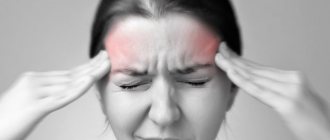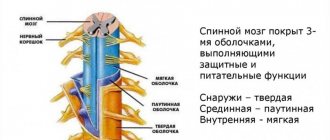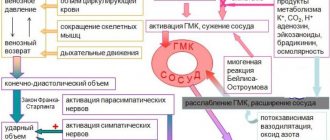Cluster headaches are characterized by pain that occurs on one side of the head. This headache is often described as pain that is localized around, behind or above the eye and along the temporal region, in cyclical patterns or clusters.
The pain with this type of headache is intense; many patients describe the pain as “boring.” To be classified as a true cluster headache, there are specific autonomic manifestations such as lacrimation, conjunctival redness, rhinorrhea or nasal congestion, drooping eyelids, sweating on one side of the face, or changes in pupil size (the pupil on the affected side becomes narrower compared to the unaffected side) . The headache lasts from 15 minutes to a maximum of 3 hours; however, the headache may recur up to eight times a day. Cluster headaches were originally described in the 17th century, but it was not until the mid-20th century that they received their name.
Men are two to four times more likely to have cluster headaches than women. However, the overall incidence is quite low, with a prevalence rate of about 1 in 1000. Due to the relative rarity of these types of headaches, information about this type of headache is limited.
Although the vast majority of patients are adults, cluster headaches sometimes occur in children as young as 6 years of age.
Symptoms
Cluster headaches are always unilateral. However, some patients may experience some sensation on the opposite affected side. Most patients describe pain localized around or behind the eye; the pain is also described as spreading to the forehead, into the jaw or along the gum and tooth line, or down the cheek on the affected side. Sometimes, the pain may spread to the ear, neck, or shoulder. Although watery eyes are a common feature of cluster headaches, some patients may only experience conjunctival redness. Drooping or swollen eyelids and a runny nose are also often associated with cluster headaches. Symptoms are often similar to those of migraines, including sensitivity to light, sound, or smell. However, unlike migraines, movement does not make cluster headaches worse. Also, many patients (more than 90%) describe feeling restless during an attack of cluster headaches.
Cluster headaches occur in groups of attacks. While the headache duration is short (on average 15 minutes), headaches can recur up to eight times in a 24-hour period. Headaches can sometimes last up to 3 hours. Cyclic group attacks can last for only one day or continue for many weeks.
What types of cluster headaches are there?
Taking into account the characteristics of the manifestations of this type of pain, it is customary to divide it into two types:
- Episodic, when cluster periods (bundles), that is, periods when attacks of characteristic headaches occur, last from a week to 1 year with remissions, or periods of absolute health, which last 1 month or more (on average 2-3 years).
- Chronic, when cluster periods are not replaced by remissions (10-15% of those suffering from this disease), or remissions last less than 1 month.
Cause of cluster headaches
The specific cause and morphological nature of cluster headaches is not known. MRI findings suggest that dilatation of the ophthalmic artery occurs during cluster headaches, while PET scans have revealed activity in the cavernous sinus. However, many patients with other types of headaches also have abnormalities in similar regions, so the results of PET and MRI are not conclusive. There is some evidence that the hypothalamus may be involved in headache cycling. Activation of the trigeminal ganglion may cause many of the autonomic changes associated with cluster headache, but there is no evidence yet that it is a trigger for attack activation.
Read also
Planning pregnancy in patients with migraine
In recent years, many women suffering from migraine have turned to the prevention and treatment of migraine during pregnancy.
Conscious responsibility for one’s health, the desire to reproduce healthy… Read more
Overuse headache (Headache caused by excessive medication)
Frequent headaches are a good reason to immediately contact a neurologist. Otherwise, you can miss the onset of a serious illness or lead yourself to the formation of an abusive headache...
More details
Monoclonal antibodies against migraine
About 11% of people in the world suffer from migraines, and a third of them are forced to stay in bed during attacks. This significantly reduces the quality of life: it interferes with work, communicating with friends and engaging in hobbies.…
More details
Orgasmic or coital headache
Orgasmic pain occurs during sex. This form of headache occurs more often in males. Symptoms of orgasmic headache: acute (paroxysmal) headache *throbbing…
More details
Trigeminal neuralgia
Trigeminal neuralgia is a chronic disease characterized by excruciating paroxysmal shooting pains in the area of innervation of one or more branches of the trigeminal nerve. Neuralgia…
More details
Triggers
Many patients report that their headaches begin during sleep. In addition, alcohol can cause headaches in patients who have already begun to experience headache cycles. Histamines and nitroglycerin can also cause headaches in patients. There was also some seasonal variability, but this was not observed in all patients. In some patients, cluster headaches have been triggered by changes in environment, stress levels, or physical activity levels. Hormonal factors or menstruation do not appear to cause cluster headaches. Other risk factors include smoking and hereditary factors.
Etiology and pathogenesis
To understand how to get rid of cluster headaches, you need to understand what pathological processes are behind the formation of this disease.
The causes of cluster headaches can be completely different. In most cases, it is not possible to identify any leading factor or organic damage to brain tissue. However, recent studies have shown that the most common cause of cluster cephalgia is:
- Pathology of the hypothalamic-pituitary system;
- Pathology of the reticular formation;
- Spasm of the cerebral arteries;
- Diseases of the sympathetic nervous system.
Patients often note the occurrence of pain during transitional weather conditions in the autumn and spring periods.
Cluster headache is a cyclical disorder and the development of the disease can be associated with disorganization in the functioning of circadian rhythms, i.e. biological clock of the body. Human circadian rhythms have a close relationship with the autonomic sympathetic and parasympathetic nervous systems. With the development of cluster headaches, there is a disruption in all these systems, i.e. the neurohumoral regulation of the body's autonomic functions is disrupted, such as vascular tone, secretion formation by the endocrine and exocrine glands, disruption of the sleep-wake cycle and many others.
Scientists have proven that when an attack of cluster cephalgia occurs in a patient, the secretion of histamine, an inflammatory neurotransmitter, in the blood increases significantly. Its concentration in the blood increases in proportion to the intensity of the headache attack. The inflammatory mediator histamine is a biologically active substance and has a vasodilating or vasodilating effect, which in turn leads to symptoms such as redness of the skin and hyperemia of the mucous membrane.
Diagnostics
The diagnosis of headache is usually made based on medical history, clinical findings, and examination findings. Cluster headaches have clear symptoms and often a history and symptoms alone are sufficient. While no neuroimaging technique can confirm the diagnosis of cluster headache, an MRI or CT scan of the brain may be necessary to rule out other possible conditions that may mimic the symptoms of cluster headache. In some cases, an ophthalmological examination is necessary to rule out problems within the eye itself that may be causing symptoms.
How is a cluster headache treated?
The main recommendation for treating this headache, as in general for any other disease, is to avoid self-medication and consult a doctor (neurologist).
There are treatments for the immediate attack of cluster headaches and preventive (interictal) treatment.
How is an attack of cluster headache treated? The most commonly used medications are:
Triptans (Sumatriptan, Zolmitriptan) in the form of tablets or spray for irrigation of the nasal cavity. Under their influence, a headache attack is relieved on average 10-15 minutes after the start of treatment;
Dihydroergotamine (spray for irrigation of the nasal cavity - Dihydrergot or solution for injection). Effect 10-15 minutes after administration.
An ice-cold 4% lidocaine solution may also be effective. To instill it into the half of the nose similar to the side of the headache, the person is asked to lie on his back, with his head turned 30° towards the headache.
Another possible way to stop an attack is mask inhalation of 100% oxygen. The recommended inhalation volume is 7 l/minute for 10 minutes. About 60-70% of patients respond to this therapy. However, in some cases, oxygen can only weaken, but not completely stop, an attack. Its disadvantage is that it is difficult to use at home.
Treatment
Treatment for cluster headaches can be divided into two categories—relieving acute headaches and preventing future headaches. Inhaling oxygen through a mask effectively helps 70% of patients and relieves an attack within a short time. However, this method of relief is quite cumbersome, and most patients are unable or unwilling to carry an oxygen cylinder with them, especially if they plan to travel. Injectable sumatriptan is also effective in 75% of patients with cluster headaches. But injection use of sumatriptan is contraindicated in patients with heart disease or hypertension. Nasal spray or tablets of this drug are less effective than injectable ones. Dihydroergotamine given intravenously can be very effective in relieving cluster headaches, but it is not always possible to give it immediately after an attack and cannot be used if the patient has already received sumatriptan within the previous 24 hours. Intranasal lidocaine may be an option for treating a pain attack, but must be administered in a specific order and is ineffective unless used correctly.
Steroids can be very effective in reducing headache cycles; they can be used occasionally, as long-term use can lead to significant complications. Verapamil, lithium, valproic acid, topiramate, and melatonin may also be used to reduce the frequency and severity of cluster headache cycles. In severe cases of cluster headaches, surgical treatment may be prescribed. Radiofrequency destruction of the trigeminal ganglion may reduce the frequency of headache clusters but is associated with significant side effects and nerve damage; methods such as gamma knife destruction and deep brain stimulation are currently in the clinical research stage. Treatment methods such as acupuncture and physiotherapy can also be used for prevention.
Types of cluster pain
Within cluster cephalgia itself, two main clinical variants of the course of the disease can also be distinguished. They are classified according to the nature of the attacks:
- Episodic in nature. Such attacks overtake the patient constantly, they can occur up to 3-4 times a week and last for months, after which they suddenly pass and may not bother the patient for years.
- Chronic cluster headaches. Painful attacks occur on a regular basis and last for more than a year. The intensity of the pain syndrome in the chronic form may be somewhat lower, and the frequency of attacks is less. The chronic form is registered in no more than 20% of patients.
Forecast
Typically, over time, cluster headaches tend to decrease in frequency, but stabilization may take many years. Cluster headaches can have persistent periods of remission and then worsen. Cluster headaches are not associated with other neurological diseases such as Alzheimer's disease, Parkinson's disease, or multiple sclerosis; although in multiple sclerosis the headaches may be somewhat similar to cluster headaches.
How can I tell if I have a cluster headache?
Attacks of this disease are manifested by extremely intense, strictly unilateral headaches in the area of the eye, eyebrow, forehead or temple (often a combination of these areas), accompanied by redness of the eye, lacrimation, nasal congestion and/or copious discharge of clear fluid from the nose (the nose “flows” ), sweat on the forehead and face, redness or paleness of the face, constriction of the pupil, drooping of the upper eyelid, swelling of the eyelids.
5 distinctive features of a cluster headache attack:
- Rapid development, with the maximum severity of the headache being achieved in about 10-15 minutes.
- Short duration, on average about 30-45 minutes.
- The occurrence of attacks mainly at night, during sleep. A developed headache attack leads to the awakening of a person, which is why this type of headache is called “alarm clock”.
- Motor agitation, that is, the inability for a person to be at rest: people walk or sit, taking a position that gives maximum relief, moan, cry, scream, threaten suicide (there have been cases of suicide attempts during an attack). Some people find relief through exercise, such as running in place.
- Strict one-sidedness, that is, during the pain bundle (cluster period), the headache ALWAYS occurs on the same side.
Upon completion of the attack, a person usually feels a feeling of irresistible fatigue and devastation.
What can provoke cluster attacks?
Triggers (provocateurs) for the occurrence of cluster pain include:
- weather changes;
- smoking and alcohol;
- high altitude (air travel, trekking);
- bright light (including solar or car flashing lights);
- pungent odors;
- nervous and physical stress;
- warmth (hot showers or baths, hot weather);
- foods high in nitrites (for example, canned meat, bacon);
- certain medications (including those that cause blood vessels to dilate, such as nitroglycerin, as well as various medications for low or high blood pressure).
As a rule, triggers have an effect only during the active cycle of cluster pain.
Similar features of patients
Scientists noted a dependence between the identification of patients suffering from cluster headaches and metric body parameters. Most of the studied patients had similar physical and metric parameters. Thus, among the patients, most often there are middle-aged men from 25 to 40 years old, with a strong muscular build. Characteristic facial features are also noted: an almost square lower jaw, a cleft chin and a light shade of eyes. More than 90% of patients note that they smoke, and the intensity of smoking is quite high, reaching up to one and a half packs of cigarettes per day.
Therapy of various forms of TVC
Treatment of cluster headaches
Treatment of CGD is largely based on empirical observations rather than on the pathophysiological concept of the disease. Drug treatment is divided into methods for relieving headache attacks and preventive (prophylactic) therapy. The placebo effect of CBG therapy is comparable to that for migraine and is about 30% [34]. Non-drug therapy is ineffective in almost all patients [30].
Treatment of a KGB attack.
Inhalation of 100% oxygen using a face mask at a rate of 7 l/min (sometimes up to 10 l/min) is effective for stopping an attack of CBG [23]. Inhalation is carried out in a sitting position. There are no contraindications for the use of oxygen, the treatment is safe and does not cause side effects. In some patients, oxygen inhalation is effective even when prescribed at the peak of the headache. About 60% of patients respond positively to oxygen therapy and report a marked reduction in pain within 30 minutes [18]. The effect of hyperbaric oxygen therapy for the prevention of CGD is controversial [33].
To relieve headache attacks, the 5HT1B/D serotonin receptor agonist, sumatriptan (for subcutaneous injection), is also used. Used at a dose of 6 mg, it showed effectiveness in 75% of patients with CG (pain relief within 20 minutes) [39]. Some authors [21] indicate that a dose of less than 6 mg is effective in stopping an attack [21]. The results of recent controlled studies [38, 41] showed the effectiveness of pain relief within 30 minutes with sumatriptan 20 mg nasal spray. Patients suffering from a combination of migraine and CBG may experience rebound headaches. Contraindications for the use of sumatriptan are cardiovascular and cerebrovascular diseases and uncontrolled arterial hypertension. The most common side effects are chest pain and paresthesia in the distal extremities.
The European Medicines Agency [9, 10, 37] also approved zolmitriptan in the form of a nasal spray (5 mg each) for the treatment of an acute attack of CGD.
In addition to these drugs, intranasal applications of lidocaine solution (1 ml of 4-10% solution) are used on the side of pain (the head should be tilted 45° forward and turned 30-40° in the direction of pain). They are effective in 1/3 of patients [26]. It is assumed that the effect of this effect is due to the blockade of the function of the structures of the pterygopalatine fossa. The use of lidocaine was prompted by previous studies showing the effectiveness of cocaine as a treatment for the attack of CBG. In this case, both its anesthetic and euphoric properties can have a positive effect [11]. Its narcotic properties naturally exclude widespread clinical use.
Octreotide (100 μg subcutaneously) has been shown to be effective in the treatment of acute attacks of CBG [28].
Most patients suffering from CHB are at high risk of developing drug-induced headache, especially in patients with comorbid migraine and a family history of migraine [35].
Preventive drug therapy.
Many patients with an attack frequency of 1 to 8 per day and frequent drug use may experience overdose or drug toxicity. The main goals of preventive therapy are to reduce the frequency and intensity of attacks and establish stable remission for the duration of the expected cluster period.
Verapamil 240–960 mg/day is recommended as the first choice drug for the prevention of episodic and chronic CGD [30]. Studies of the effectiveness of verapamil and lithium carbonate revealed their effectiveness in comparison with placebo, and the speed of onset of the effect was higher when using verapamil [17]. Verapamil is well tolerated and can be used in conjunction with sumatriptan, ergotamine, corticosteroids and other preventive drugs, but regular ECG monitoring is necessary. It is recommended to increase the dose by 80 mg every 14 days. Maximum effectiveness of verapamil should be expected within 2-3 weeks. During the first 2 weeks of using verapamil, some specialists prescribe corticosteroids.
Since there are no randomized placebo-controlled studies of the effectiveness of corticosteroids for the treatment of CGD, steroids are recommended to be prescribed in short courses of 2-3 weeks to quickly control attacks. They are highly effective in quickly suppressing an attack, unlike the preventive drugs mentioned above, which take longer to take effect.
In some patients, attacks of CGD are controlled only by steroids, and therefore long-term administration of steroids in such patients is justified and necessary. There are no clear data on the dosing regimen of steroids in combination with verapamil. It is recommended to start with 60-100 mg of prednisolone once a day for 5 days, then reduce the dose by 10 mg every day. 70-80% of patients with CG respond to steroid therapy. A combination of intravenous and oral steroids is possible [15].
Lithium preparations are also used in preventive therapy. The positive effect of lithium carbonate is achieved in 78% of cases [12]. When comparing verapamil and lithium, a faster onset of effect and better tolerability of verapamil were noted [8]. As in other cases of lithium use, its level in the blood plasma should be monitored in the clinic (it should be in the range of 0.3-1.2 mmol/l). Because lithium has a small therapeutic window, it is recommended for chronic headache when other medications are ineffective or contraindicated.
Methysergide is effective in 20-73% of patients, mostly in cases of episodic CG. The usual dose is 4-8 mg/day with a possible increase to 12 mg (start with 1 mg/day). Methysergide should be prescribed with caution to patients taking ergotamine and/or triptans. With long-term use, cases of pulmonary and retroperitoneal fibrosis have been reported, so the maximum duration of treatment is limited to 6 months [32].
Satisfactory results were obtained in a study of valproic acid [19]. Efficacy for the prevention of CBG was also noted in open studies of topiramate [31] at a dose of 100 mg/day (with an initial dose of 25 mg); the main side effects in these cases were cognitive impairment, paresthesia and weight loss.
Repeated intranasal applications of capsaicin were effective in 2/3 of patients [16], but the studies were not blinded (which is difficult to achieve when using drugs that irritate the nasal mucosa).
The superiority of combinations of different drugs for the preventive treatment of CGD has not been proven, although some patients benefit from combination therapy rather than high doses of a single drug. Usually, if combination therapy is required in clinical practice, the basis is verapamil in doses of 240-480 mg and some other drug from the previously mentioned for preventive therapy. According to the consensus of the 9th International Headache Research Workshop, combination therapy is recommended for patients with headache refractory to monotherapy [40].
Interventional and surgical treatment of KGB.
In this case, we are talking about blockade of the greater occipital nerve, which in 2/3 of patients with CHB leads to a significant reduction in attacks [7, 36]. The effectiveness of suboccipital administration of short- and long-acting steroids has also been shown [3].
The question of surgical treatment is raised only if drug therapy is ineffective and secondary CGD has been excluded. Surgical methods should be treated with caution, as they can provoke trigeminal neuralgia or painful anesthesia, especially since there are no data on long-term follow-up of such patients [14]. Unlike trigeminal neuralgia, surgical treatment of KGB is not a routine procedure and headache often persists after the procedure.
Other methods have also been proposed: injection of glycerol or local anesthetics into the gasserian ganglion tank, radiofrequency rhizotomy, gamma knife irradiation of the gasserian ganglion or trigeminal nerve, microvascular decompression, resection and blockade of the superficial petrosal nerve or pterygopalatine ganglion [15, 28], but they have not received distribution.
There is also evidence of the complete ineffectiveness of surgical treatment of CHB and associated syndromes [15]. In some cases, a blockade of the greater occipital nerve is sufficient, which can be used before the question of surgical treatment is raised.
In patients with episodic headache, great care should be taken when resorting to surgical manipulation of the peripheral structures of the trigeminal nerve, since periods of remission exist in episodic headache, and there is convincing evidence that even complete denervation of the trigeminal nerve may not be effective in patients with chronic headache. in preventing headache attacks and autonomic symptoms [29]. Destructive operations on the trigeminal nerve are always accompanied by pronounced pain and these procedures are being replaced by neuromodulation methods. Data have been obtained on the effectiveness of deep stimulation of the hypothalamus in the majority of patients with intractable CGD. This method is effective for the prevention, rather than the treatment, of an acute attack of CBG [24]. Open studies have shown the effectiveness of electrical stimulation of the greater occipital nerve in intractable chronic headache [6].
In conclusion, the presented data can be summarized in the form of recommendations for the treatment of CGD [15], which are presented at 3 levels.
Level A
The first choice drug for reversing an acute attack of CBG is pure oxygen at 7 L/min for 15 minutes (class II studies) or subcutaneous sumatriptan 6 mg or intranasal zolmitriptan 5 mg (class I studies). The second-line drug is sumatriptan nasal spray 20 mg (class I studies with minimal efficacy and many side effects). Prophylactic treatment of CBG should begin with verapamil at an initial dose of 240 mg/day (maximum dosage depends on the effectiveness and tolerability of the drug; ECG monitoring is necessary at each dose increase), but there are no class I or II studies. Steroids are also quite effective for CGD, so tablets of methylprednisolone in a daily dose of 100-500 mg or other corticosteroids in equivalent doses for 5 days are recommended.
Level B
To relieve an acute attack of CBG when level A drugs are ineffective or there are contraindications to them, intranasal use of a 4% lidocaine solution is possible. Oral zolmitriptan 10 mg is effective in some patients (class I studies), but larger doses are more likely to cause side effects. If verapamil is ineffective or if there are contraindications for its use, methysergide or lithium carbonate, which are second-line drugs, are used. Corticosteroids can be used in short courses, for short attacks, or to improve compliance with another drug. Topiramate is probably effective. Melatonin is effective in some patients. With the exception of lithium carbonate, the maximum dose depends on the effectiveness and tolerability of the drug. For prophylaxis, short courses of ergotamine tartrate are recommended (class III studies). Although there are good results from class II studies, pizotifen and capsaicin should not be used due to side effects.






